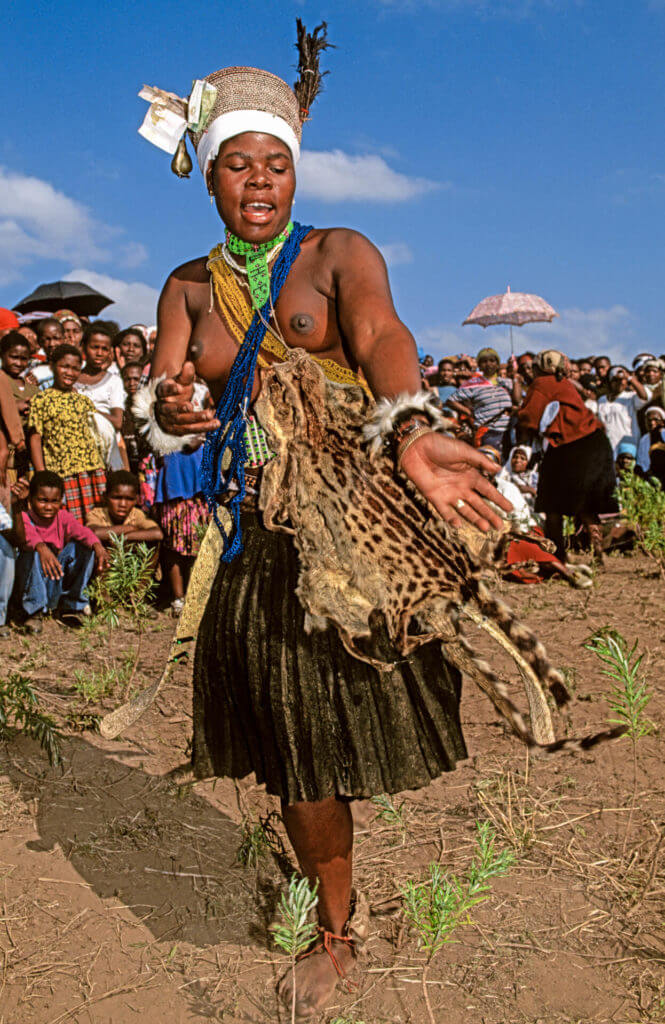
ZULU WEDDING

HEROIC ORIGINS
The Zulu people originated in southern Africa in the sixteenth century from a small chiefdom near the White Umfolozi river, in the area known today as KwaZulu-Natal. It was not, however, until the legendary leader, Shaka, became king in 1818, that the true foundations of the Zulu nation were laid. During his reign, he forged the mightiest empire in the region, and today his people still constitute the largest population group in South Africa. The Zulu have always been famed for their achievements in warfare and for the vibrant and spectacular dancing, originally performed before battle by the king’s regiment outside his royal compound. Now that major wars are no longer fought by the Zulu their warrior dancers have taken on a more ceremonial form. Their most frequent expression takes place at Zulu festivals, particularly the celebration of marriages. A highlight of every marriage ceremony is an elaborate dance competition that portrays the ritual antagonism between the families of the bride and groom. These energetic routines are performed with precise timing and postures that strikingly recall war dances. Zulu marriage marks a double transition for the bride, during which she withdraws from her own family and ancestral line and joins that of her husband. At the outset of a wedding, the bride's father scorns the dowry offered by the groom, insisting that he must be better compensated for the loss of his daughter. During the negotiation of the dowry much friction develops between two families, and at the marriage ceremony itself the groups insult each other by singing songs that infer wantonness and witchcraft. Relations between the families improve, however, when the bride finally leaves her parental home, taking with her a number of cows and gifts of mats, baskets, and beads to give to the groom's family. After the bride's arrival in her new home, a goat is slaughtered to inform the ancestors and gain their good will. To begin the marriage celebrations the bride is dressed by her bridesmaids in a new pleated hide skirt and accompanied throughout the ceremony by her maid of honor, her best friend. After a meat feast is held to welcome the guests, with food provided by both sets of parents, the rivalry between the two groups subsides. At the end of the ceremony, the bride is anointed with animal fat by her mother-in-law, and a baby is often placed on her back to show she is expected to produce a new generation.

